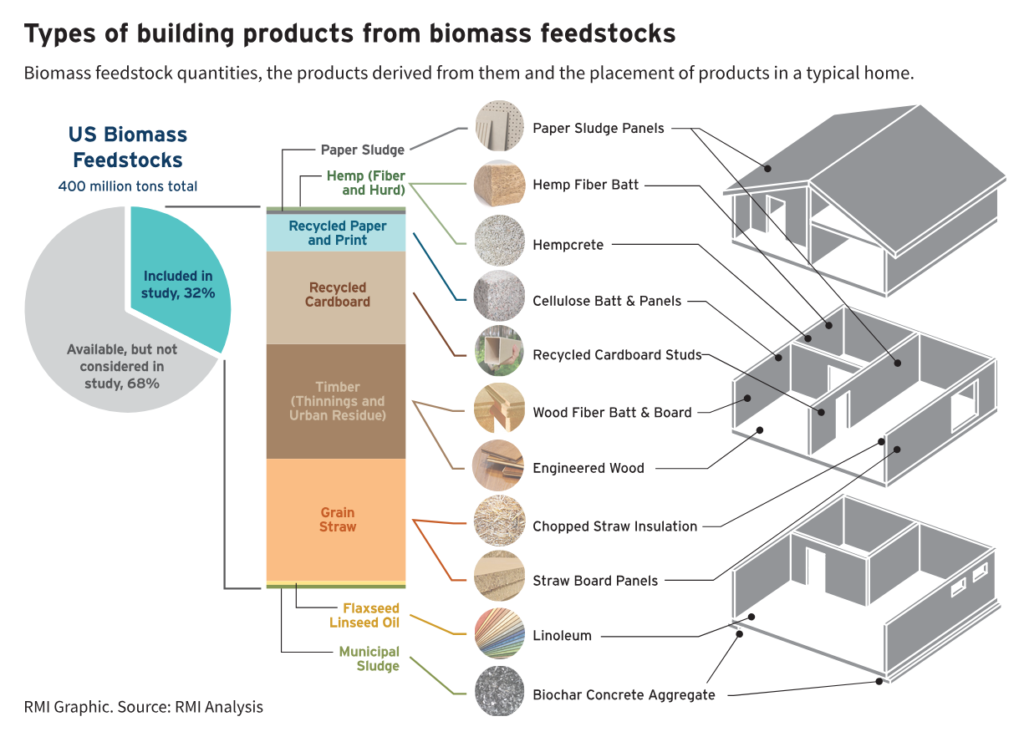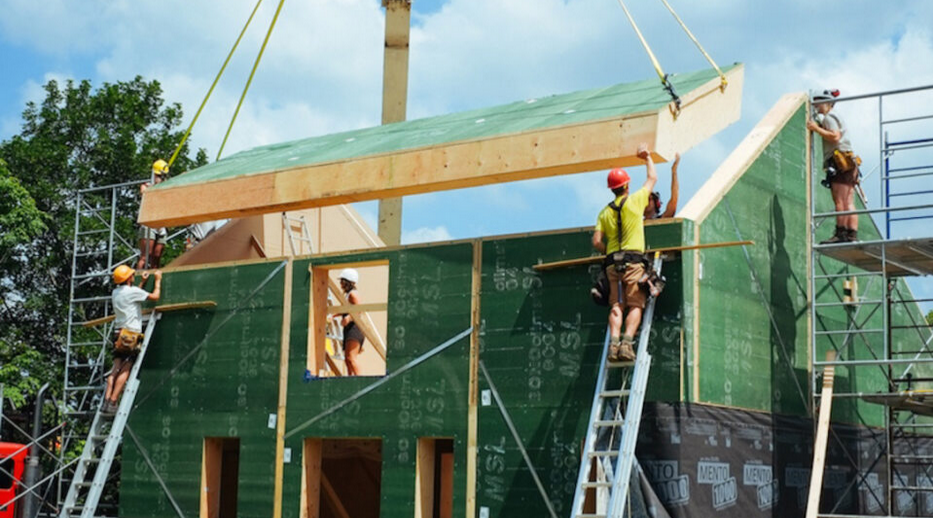What if we could effectively store millions of tons of carbon in a way that helps solve America’s housing crisis, creates jobs, and boosts manufacturing — all at once? A report issued by the Rocky Mountain Institute (RMI) sheds light on manufacturing building products from up-cycled biomass that’s already abundant across the United States.
RMI’s analysis investigates the benefits of converting the 400 million tons of underutilized biomass from farms, forests, and landfills into valuable building materials. They determined the scale of positive impacts by analyzing the life cycle of bio-based products in US home construction, US manufacturing capacity needs and resulting economic benefits, and the availability of low-value biomass feed-stocks across the country.
 They found that the United States could store 100 million metric tons of CO2 in new residential buildings over 25 years — equivalent to almost the entire state of California being covered by a forest that is storing carbon in its soil and trees. Additionally, this would keep more than 35 million tons of waste out of landfills, prevent wildfires, and create $79 billion in new manufacturing opportunities, 42,000 direct jobs, and 310,000 indirect jobs in domestic manufacturing, while enabling the construction of healthier, affordable homes.
They found that the United States could store 100 million metric tons of CO2 in new residential buildings over 25 years — equivalent to almost the entire state of California being covered by a forest that is storing carbon in its soil and trees. Additionally, this would keep more than 35 million tons of waste out of landfills, prevent wildfires, and create $79 billion in new manufacturing opportunities, 42,000 direct jobs, and 310,000 indirect jobs in domestic manufacturing, while enabling the construction of healthier, affordable homes.
 Unlike many carbon removal solutions still in development, biomass building products are already commercially manufactured in the United States and globally. From insulation to flooring, wall panels to concrete alternatives, these products are market-ready and cost-competitive with conventional materials.
Unlike many carbon removal solutions still in development, biomass building products are already commercially manufactured in the United States and globally. From insulation to flooring, wall panels to concrete alternatives, these products are market-ready and cost-competitive with conventional materials.
 The report also presents case studies of affordable new homes built with the types of biomaterials featured in the modeling, alongside examples of recently established manufacturing facilities for such products across the United States.
The report also presents case studies of affordable new homes built with the types of biomaterials featured in the modeling, alongside examples of recently established manufacturing facilities for such products across the United States.
You are encouraged to download the report and join the leading builders, manufacturers, and policymakers that are embracing this sustainable revolution in residential construction.
You can read the original article and download the report at rmi.org

Part of the reason why housing is so expensive nowadays is the paradigm of viewing houses as investments more than places to live. This leads to all kinds of laws, animosity, etc designed purely to keep property values nice and inflated. It becomes a battle between existing homeowners and younger people just looking for their first houses or apartments outside their parents places. Unless and until we fix such a flawed way of thinking about one’s home, any other fixes to create affordable housing are temporary bandaid solutions at best!